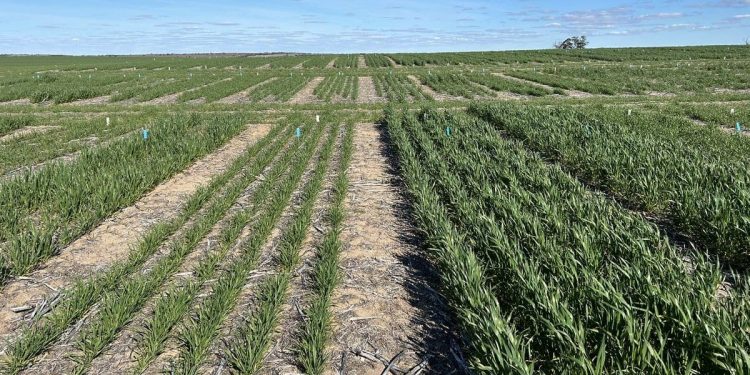Current Conditions and Market Trends for Australian Grains
The Australian grain market is experiencing significant fluctuations as unseasonably warm temperatures are expected to hit south-eastern Australia next week. This weather pattern is a concern for crops already struggling with low moisture levels, particularly in South Australia’s South East, Victoria’s Western District, and parts of southern New South Wales. Given the brutal dryness in the first half of the year, many on-farm stocks have been depleted, and there are increasing fears that frost or further warm weather could reduce yields even more.
This situation could lead some growers to consider cutting their cereal crops for hay, thus lowering the area harvested for grain. The potential decrease in grain production might impact supply and pricing.
On the export front, the low Australian dollar is making containerized wheat and barley competitive in Asian markets, although there is a need to fill some barley cargoes. Prices for barley and wheat have seen variations, with new-crop values remaining steady but prompt wheat showing a $15 per tonne increase due to tightening carry-out stocks.
Here’s a summary of the indicative prices in Australian dollars per tonne:
- Barley Downs: $352 (up from $343 on July 25)
- ASW Downs: $365 (up from $343 on July 25)
- Sorghum Downs: $340 (up from $330 on July 25)
- Barley Melbourne: $345 (up from $325 on July 25)
- ASW Melbourne: $360 (up from $355 on July 25)
In northern regions such as Queensland and northern NSW, wheat and barley crops are generally in excellent condition, although some areas have been affected by frost. Recent rains in northern NSW have provided some relief and improved moisture levels, but concerns remain about the overall crop outlook.
In southern Australia, market anxiety is evident due to the region’s precarious conditions. With forecasted temperatures reaching up to 25 degrees Celsius and limited subsoil moisture reserves, there is growing unease about the potential impact on the harvest. This has led to increased prices in the southern market and a focus on local rather than global factors.
Overall, the grain market remains volatile with mixed signals from different regions, and many traders are cautious, holding off on selling new crop as uncertainties linger about the weather and crop conditions.
Error




